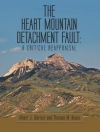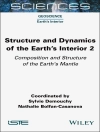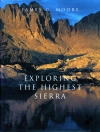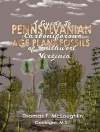This book summarizes the links between the evolution of sedimentary basins of Northern Africa and Peri-Mediterranean in different tectonic settings and the distribution of georesources in those basins. Georesources include fossil energy, geothermal energy, deep aquifers, minerals and deposits. This book also provides key information for energy resources in these important areas. The book is in part a compilation of selected papers from Atlas Georesources International Congress, Hammamet, Tunisia, (AGIC 2017) which were extended after the congress in addition to other contributions from geoscientists based at some universities and companies from the region. It is organized in a set of research studies focusing on the architecture, geodynamic evolution and modeling of sedimentary basins in the Middle East, North Africa and the Mediterranean domain. Future developments in the exploration for water, energy and other georesources are very important in these regions. In this context, thisbook constitutes an important reference for a wide range of geoscientists and companies as it defines the distribution and potentialities of these resources.
Tabella dei contenuti
Chapter 1. The Mediterranean Sea: a laboratory to characterize micro-continental drift and oceanic basin formation processes.- Chapter 2. The westernmost Tethyan margins in the Rif Belt (Morocco), a review.- Chapter 3. The Tellian units, the Sellaoua window and the High Medjerda foreland in the Souk Ahras area, NE Algeria.- Chapter 4. Facies Analyses and Basin Evolution of the Cretaceous-Tertiary Rift-related Sedimentary Succession of Haddat Ash Sham area, West Central Arabian Shield, Saudi Arabia.- Chapter 5. Petroleum system evaluation of Upper Cretaceous and Eocene plays, offshore and onshore southern Pelagian Basin, Tunisia.
Circa l’autore
Sami Khomsi is a structural-petroleum geologist. He got his Phd at Tunis University in 2004 and his HDR (Habilitation à Diriger des Recherches) in the same university in 2015. Since 2011, he works in the Department of petroleum geology and sedimentology, and in the Geoexploration department in the faculty of Earth Sciences, King Abdulaziz University, Jeddah, Saudi Arabia. He worked also in different universities in Tunisia and France.
Past employment within academia (research and teaching) and industry in the exploration activities: involved in many international programs, regional exploration assets, regional synthesizes, sites survey, prospects evaluation and professional expert training (field trip leader for professionals, coaching of geoscientists…) in basin analysis involving basin modeling, structural analysis and balanced cross sections. Sami collaborated with major oil companies in Eastern Maghreb on field studies, structural analysis of fold-thrust structures, subsurface reservoir characterizations and seismic interpretations. He has also experience in geophysical methods involving fast processing and interpretation of seismic reflexion sections in terms of structural geology-investigation- evaluation of plays, characterization of fractured reservoirs and subsurface mapping.
His main research interests: Geometry, kinematics and dynamics of fold-thrust systems and foreland basins in North Africa, Middle East and the Mediterranean realm, fractured reservoir analogues, applying structural analysis and subsurface techniques in the characterizations of drillable structures and structural evaluation of traps using regional cross sections at large scale as well as structural subsurface based on regional seismic reflection profiles in different basins.
François Roure was trained at the ENS in St-Cloud in France. He got his Ph.D. at Paris VI University in 1979 and his “thèse d’état” in 1984 at the same university, dealing with the geodynamic evolution of the North American Cordillera in northern California and Oregon during the Mesozoic. After 4 years spent with CNRS (1980–1984), he joined the French Institute of Petroleum (IFP) in 1984, and was still senior geosciences advisor at IFP Energies nouvelles, the current name of former IFP, from 2000 to 2016, extraordinary professor at the University of Utrecht, the Netherlands, from 2012 to 2016, and member of the CNE2 (French assessment board for research and the studies into the management of radioactive waste and materials, from 2010 to 2016. Together with Magdalena Scheck-Wenderoth from GFZ, François was also leading from 2005 till 2015 the Task Force 6 on Sedimentary basins from the International Lithosphere Program (ILP, with support form IUGS and IUGG).
Until 1995, his main research topic was the crustal architecture of the Alps and Pyrenees (Ecors program), and the petroleum systems of foreland fold-and-thrust belts in the Apennines, Carpathians, Albania, Sicily, Alaska and Venezuela. After a sabbatical year spent at the USGS in Menlo-Park, California (1994–1995), François initiated numerous international joint industry projects for reservoir appraisal (Sub Trap, Sub-thrust reservoir appraisal) in the Himalayan foothills in Pakistan, in sub-Andean basins in Venezuela and Colombia, as well as in the North American Cordillera (Mexico and Canadian Rockies). More recently, he was also involved in the study of the crustal architecture of the Northern Emirates and North Algeria (Tellian and offshore domains).
• Charles Jacob prize from the French Academy of Sciences (1996) • Distinguished Lecturer for the AAPG (1998)
• Alfred Wegener prize from the EAGE (2010) • André Dumont medal from Geologica Belgica (2012)












